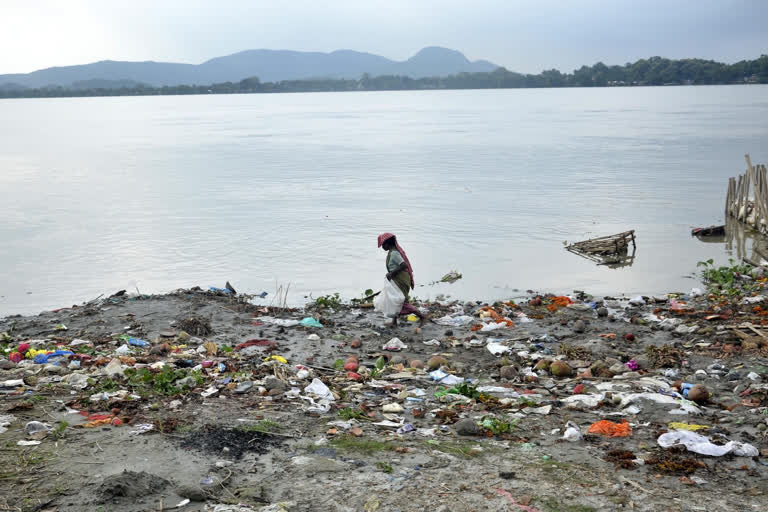Hyderabad: River Ganga, called as the River of India by the first Prime Minister of India Jawaharlal Nehru is losing her vitality due to pollution. In Indian culture, rivers are revered as goddesses. It is a custom for crores of Indians to sprinkle the holy water brought from Varanasi on their head.
To the dismay of citizens, Uttar Pradesh Pollution Control Board (UPPCB) revealed that Ganga water is unfit even for bathing. Critically high level of Coliform and Faecal Coliform bacteria has been detected in Ganga in Kanpur, Prayagraj and Varanasi districts.
Central Pollution Control Board (CPCB), which conducted research in 86 areas has confirmed that Ganga water is dangerous for consumption. Every day, inflow of about 300 crore litres drainage water from surrounding 100 towns is polluting Ganga.
Even after spending thousands of crores under the Namami Gange scheme, there seems to be no improvement. The special committee of engineers appointed to keep a check on 225 inflow drains across 800 kilometers is to be nowhere seen. This is not just the spate of Ganga but of many other rivers in India.
Almost 10 years ago, about 121 rivers have been destroyed due to rapid industrialisation and dumping of sewage wastes. In the next 6 years, the count has increased to 300. According to the recent CPCB census, the count has now reached 350 with states like Assam, Gujarat and Maharashtra taking the lead.
Although there are more than 450 rivers in India, two-thirds of them are deemed unfit for drinking and domestic purposes. Without any efforts from government, schemes like National River Conservation Plan will yield no results.
Budget worth Rs.20,000 crores has been allotted for Ganga purification and Rs.5,870 crores have been allotted to improve the water quality in 34 river bodies across 16 states, but the implementation is lackluster.
Sutlej river is affecting livelihoods of 1 crore people in Punjab and Haryana states, but no efforts have been put towards its improvement. Comptroller and Auditor General of India (CAG) has recently revealed that lack of water recycling is the major cause of river pollution.
According to CPCB census, water quality in Krishna, Godavari, Penna, Manjeera, Sabari and Musi is alarmingly low. It has been a year since CPCB warned about distressing water conditions in Vasishta (Tamil Nadu), Ghaggar (Haryana-Punjab), Bhadra and Sabarmati (Gujarat), Meethi (Maharashtra) and Hindon (Uttar Pradesh).
Leave alone improving water conditions, the quality seems to be worsening over time. Nationwide, 60 percent of drainage water is flowing into the rivers without any recyclage. Out of 6.2 lakh litres of drain water produced every day, only 2.3 lakh litres are recycled. Pollution, illegal mining and constructions, sand mafia are destroying river ecosystems.
Musi, which once quenched the thirst of Hyderabadis has now become a drain. Musi Riverfront Development Corporation (MRDCL) did not take up any substantial work citing lack of funds. Rivers like Thames in England have been cleaned and beautified from near death. A dying river in Kerala’s Kuttamperoor has been brought to life by the locals.
Similar efforts have been carried out by locals to revive Coonoor river in Tamil Nadu’s Nilgiris. Only when central and state governments unite with the citizens, the dying lifelines can be brought back to life.
Read: Interlinking of rivers can provide a solution to India's water challenges




